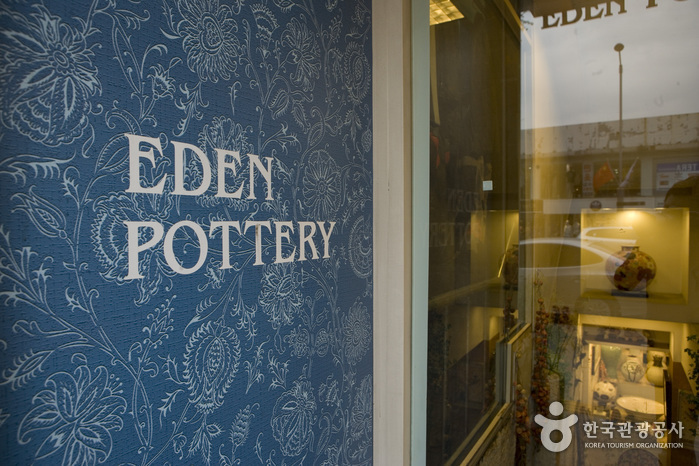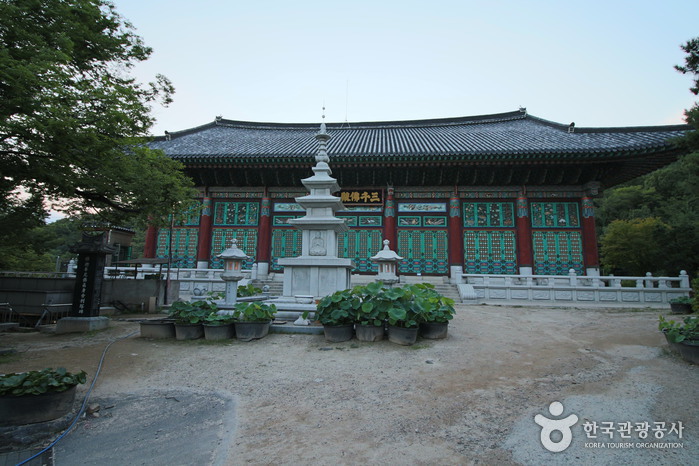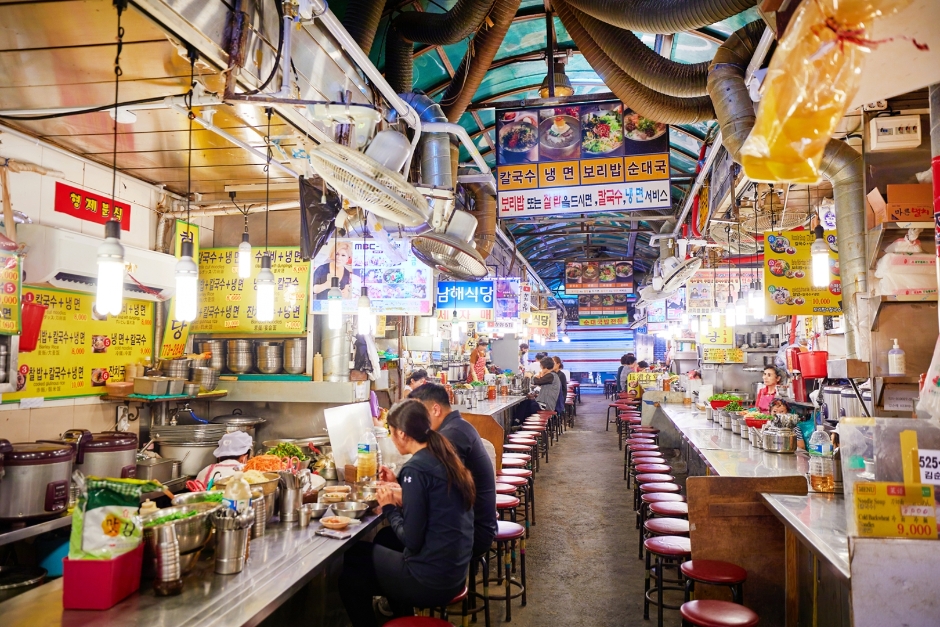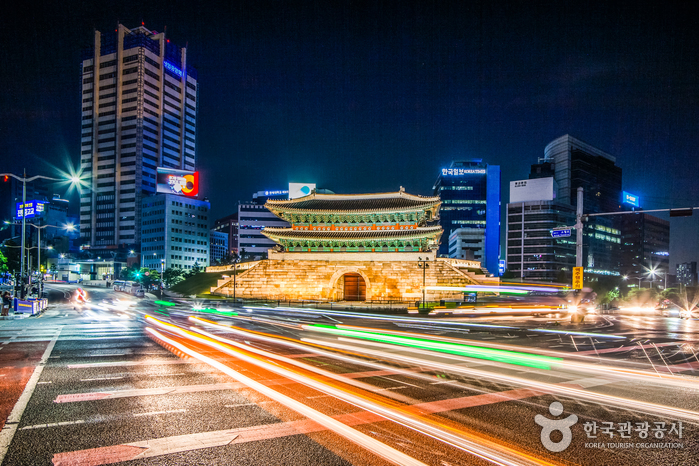Gucci - Hyundai Mokdong Branch [Tax Refund Shop] (구찌 현대 목동점)
5.2Km 2024-04-23
257, Mokdongdong-ro, Yangcheon-gu, Seoul
-
Omega - Hyundai Mokdong Branch [Tax Refund Shop] (오메가 현대 목동점)
5.2Km 2024-04-18
257, Mokdongdong-ro, Yangcheon-gu, Seoul
-
Eden Pottery (에덴도자기)
5.2Km 2016-08-24
159-1, Itaewon-ro, Yongsan-gu, Seoul
+82-2-793-0828
Eden Pottery specializes in Korean pottery from celadon to white porcelains. The shop is full of superb Korean pottery in its gallery-like atmosphere. Customers will be exposed to the rich history of Korean pottery and its diverse types. Products are made by experienced craftsmen.
ABC-Mart - Itaewon Branch [Tax Refund Shop] (ABC마트 ST이태원)
5.2Km 2024-04-22
159-1, Itaewon-ro, Yongsan-gu, Seoul
-
Bongwonsa Temple (봉원사)
5.2Km 2023-03-13
120, Bongwonsa-gil, Seodaemun-gu, Seoul
+82-2-392-3007
Located on the outskirts of Ansan Mountain in Bongwon-dong, Seodaemun-gu, Seoul, Bongwonsa Temple, as the center of Korean Buddhism Taego, is a thousand-year-old temple with a long history and tradition. In 889 (3rd year of Shilla Queen Jinseong’s reign), Monk Doseon founded it at the ground of Yeonhui Palace (now Yonsei Univ.) and named it Banyasa temple. It was destroyed during the Imjin War in 1592, and later in 1748 (the 24th year of Joseon King Yeongjo’s reign), it was rebuilt and renamed “Bongwonsa” by two Buddhist monks, Chanjeup and Jeungam.
“Yeongsanjae,” one of the Buddhist rituals and also a National Intangible Cultural Property, takes place at Bongwonsa on June 6 every year wishing for world peace and the reunification of North and South Korea. It was designated as one of the Intangible Cultural Heritage of Humanity by UNESCO in 2009. During Yeongsanjae, visitors can enjoy the Buddhist arts such as Beompae (Buddhist temple music for rituals) and dancing. Also, during summertime, Seoul Lotus Flower Culture Festival takes place, where visitors can enjoy the beautiful lotus flowers which are a symbol of Buddhism.
Namdaemun Market Gourmand Alley (Kalguksu Alley) (남대문시장 먹자골목(칼국수 골목))
5.2Km 2023-11-06
42-1, Namdaemunsijang 4-gil, Jung-gu, Seoul
Namdaemun Market is a massive market in Seoul filled with history and traditions. In the market, there is a place where people can dine without worrying about time or money, in an unmistakably Korean atmosphere, and that is the Gourmand Alley (Kalguksu Alley). The alley is lined with stalls selling similar fare, and people sit down in front of them, shoulder to shoulder, to enjoy their meal. Namdaemun Market’s Gourmand Alley specializes in noodle soup and steamed barley rice sets. The latter is a mixture of rice and barley, which is then steamed together. Its call to popularity is the nutty flavor imparted by barley. It has a healthy taste like no other, so make sure to check it out. Each order often comes with two or three separate menus (noodle soup, steamed rice, cold buckwheat noodles, etc.), along with a sumptuous array of side dishes like kimchi. Because this spot is beloved by diners of all ages, one often has to wait to get one’s turn during meal hours or on weekends. Keep in mind that the alley’s age often manifests itself in its crowdedness and lower attention to hygiene.
Another thing to note is that first-time visitors often find it difficult to find the entrance to the alley. The entrance is the transparent plastic door right next to “Segye-ro Eyeglasses Shop,” which can be found right across from Exit 5 of Hoehyeon Station on Seoul Subway Line 4. The door is rather small and difficult to find, but once you enter the doorway, you will immediately see the stalls unfolding in front of your eyes.
TV program “Life Masters (2005-)”
TV program “A Walk Around the Neighborhood (2018-2022)”
Innisfree - Itaewon Branch [Tax Refund Shop] (이니스프리 이태원)
5.2Km 2024-04-18
160-1, Itaewon-ro, Yongsan-gu, Seoul
-
Choeun Optical - Hoehyeon Branch [Tax Refund Shop] (조은안경 회현)
5.3Km 2024-04-22
Joeun Eyewear, 42, Namdaemunsijang 4-gil, Jung-gu, Seoul
-
Choeun Optical [Tax Refund Shop] (조은안경)
5.3Km 2024-06-27
42, Namdaemunsijang 4-gil, Jung-gu, Seoul
-
Sungnyemun Gate (숭례문)
5.3Km 2024-11-27
40 Sejong-daero, Jung-gu, Seoul
Sungnyemun Gate is Korea’s National Treasure No. 1, and its unofficial name is Namdaemun Gate. Sungnyemun Gate is the largest castle gate stone structure with an arched entrance in the middle. There’s a column on top of a platform, raising the roof, distinguishing the upper stories and lower stories of the building. Passageways for traffic are located at the east and west ends of the gate. Different from the other gates, Sungnyemun Gate’s tablet has its name written vertically.
On February 10, 2008, Sungnyemun was destroyed by fire. After a 5-year reconstruction work, the gate was re-opened to the public again on May 4, 2013.


![ABC-Mart - Itaewon Branch [Tax Refund Shop] (ABC마트 ST이태원)](http://tong.visitkorea.or.kr/cms/resource/73/2878473_image2_1.jpg)


![Innisfree - Itaewon Branch [Tax Refund Shop] (이니스프리 이태원)](http://tong.visitkorea.or.kr/cms/resource/39/2878539_image2_1.jpg)

 English
English
 한국어
한국어 日本語
日本語 中文(简体)
中文(简体) Deutsch
Deutsch Français
Français Español
Español Русский
Русский